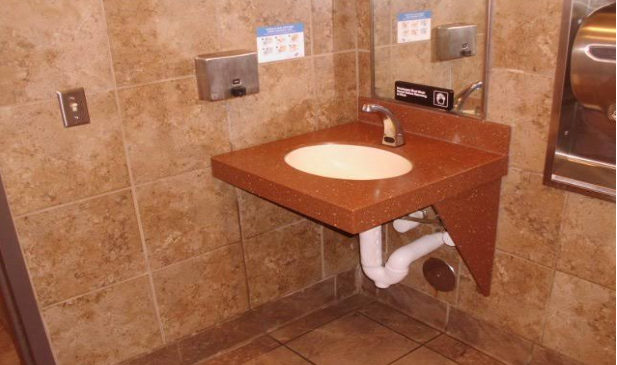
Understanding ADA desk knee clearance standards is essential for creating accessible and functional workspaces across various jurisdictions. These regulations ensure that individuals with disabilities can navigate offices and work environments with ease, much like a vehicle moving smoothly through an open aisle. Proper desk height and knee clearance can make a significant difference, especially when considering the use of elevators and other accessibility features. As design evolves, incorporating these ADA standards becomes even more crucial for modern office furniture. From breaking down minimum knee clearance requirements to exploring future trends in desk design, the journey of creating inclusive spaces is both exciting and necessary. Keep reading to discover how to make desks truly accessible for all.

Adhering to ADA compliance in desk design plays a vital role in ensuring equitable access for all individuals, particularly those with disabilities. This commitment to accessibility includes understanding the necessary knee clearance that allows comfortable use of workspaces. Knowing how much space is required beneath desks for ada knee clearance helps to optimize functionality and user experience. Key dimensions for accessible desks must account for various factors, including the height and depth needed for leg room, as well as considerations for other fixtures like sinks or equipment located in the vicinity. For instance, the regulations outlined by the national fire protection association and the law must be adhered to, especially in spaces like mezzanines where traffic may be confined. Understanding these principles is essential for creating an inclusive environment that promotes productivity and safety.
ADA compliance is crucial in desk design, as it ensures that spaces cater to the diverse needs of all users, including those with disabilities. This regulation promotes inclusivity by stipulating specific metrics for knee clearance, particularly important in environments such as auditoriums where accessibility is vital for audience participation. By considering a unisex approach, designers can create fixed furniture solutions that enhance comfort for everyone using the facility, while taking into account the finish floor height to maintain optimal usability.
When defining knee clearance, it is essential to determine the appropriate dimensions for optimal usability. Typically, a minimum room height of 27 inches allows for comfortable leg positioning, ensuring that individuals can easily maneuver around furniture or fixtures like a fountain. Incorporating features such as a grab bar can further enhance accessibility, providing necessary support while adhering to ADA standards.
Key dimensions for accessible desks directly influence the usability of workstations for individuals with varying needs. A standard height of at least 28 inches is recommended to accommodate the average seated user while ensuring sufficient knee clearance, typically around 30 inches in width and 24 inches in depth, which aligns with the frequency of use seen in numerous environments. Incorporating features that comply with the international symbol of access, like adequate leg room for tableware placement, further enhances the inclusivity of these spaces.
Now that the essentials of ADA desk knee clearance are clear, it’s time to dive into the specific minimum requirements set by the ADA. Understanding these standards ensures compliance and accessibility for all.
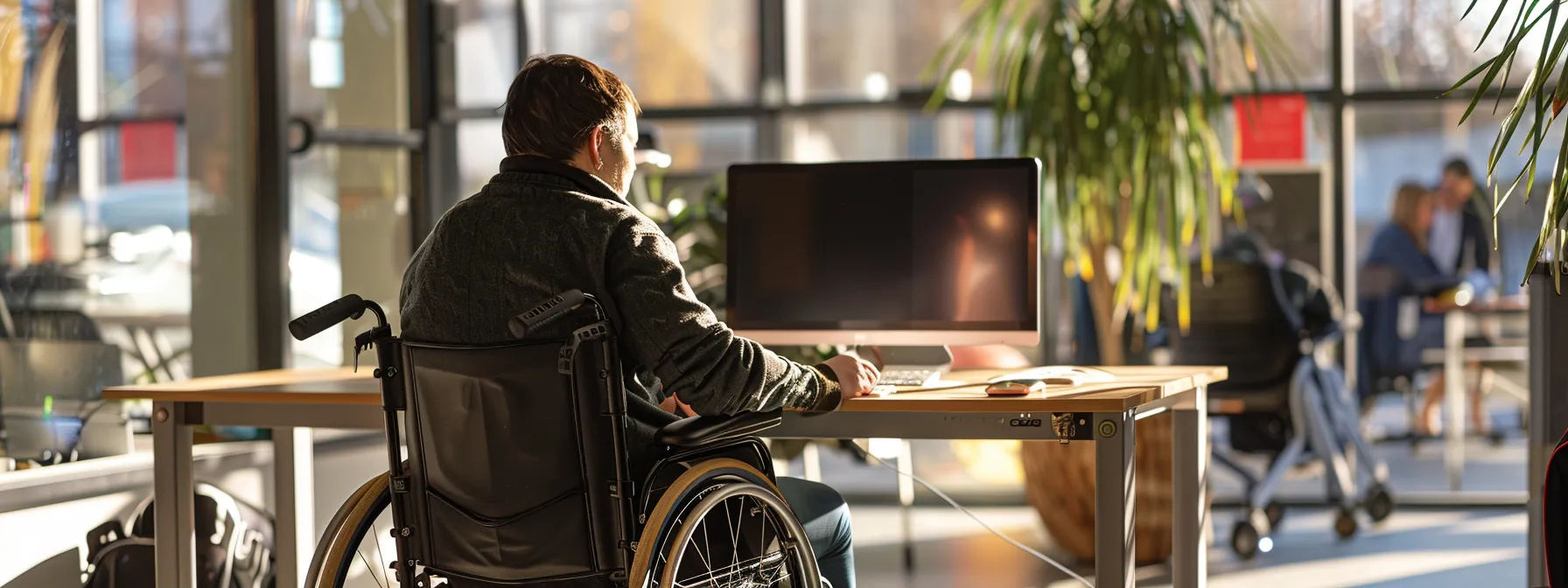
Minimum knee clearance standards play a significant role in creating environments that prioritize accessibility. These standards typically outline height requirements to ensure comfortable access for individuals who may rely on mobility devices. The depth and width of the desk space are equally vital, accommodating various needs while supporting effective maneuverability. For wheelchair users, dimensions that allow perpendicular approaches are essential for seamless interaction with workstations. Furthermore, thoughtful design fosters an inclusive atmosphere, using features like handrails and scaffolding to enhance safety and accessibility as well as accommodating devices such as telecommunications devices for the deaf to promote complete participation in diverse occupancy situations.
The minimum height requirements for knee clearance are fundamental for achieving ADA compliance in various environments, particularly in learning spaces. Ensuring that the underside of tables and desks provides adequate room allows individuals using mobility devices to engage comfortably with their surroundings. By prioritizing accessible design, facilities can significantly enhance user experience under the roof of inclusivity, aligning with established standards found in the table of contents related to accessibility guidelines.
Providing adequate depth and width is crucial to ensure comfortable access for all individuals, especially those with disabilities. Desks must accommodate a minimum depth that enables users, including passengers who rely on mobility devices, to navigate easily without obstruction. Specific considerations, such as the inclusion of curb cuts, enhance overall accessibility, allowing smoother transitions between various spaces within a facility, such as a courtroom or other public areas.
The ADA standards specifically address the needs of wheelchair users to ensure equitable employment opportunities and access to various spaces, including kitchenettes. By providing adequate knee clearance, these requirements facilitate independent movement and usability for individuals with disabilities. In Texas, adherence to accessibility standards during inspection ensures that workspaces comply with regulations that promote inclusivity and accessibility for all users.
Understanding the minimum knee clearance requirements sets the stage for effective design strategies. Next, let’s dive into practical tips for creating ADA-compliant desks that prioritize accessibility and comfort.

Designing desks in compliance with ADA standards requires careful consideration of multiple factors to ensure accessibility and functionality for all users. Practical advice includes focusing on the adequate toe clearance beneath surfaces to allow easy movement for individuals using mobility devices. Selecting the right materials plays a significant role; surfaces should be both durable and easy to maintain while also allowing clear access points, such as door openings that accommodate diverse needs. Designers must remain vigilant about common pitfalls, particularly in areas like public lobbies or specialized environments such as air traffic control rooms, where clutter can obstruct pathways. Addressing frequently asked questions (FAQ) about the specific needs of users is essential for creating inclusive spaces that truly embrace accessibility.
Designers should prioritize clear pathways to ensure that ADA-compliant desks facilitate easy access and maneuverability. Maintaining an appropriate ratio of free space to fixtures boosts both fire safety and ventilation, allowing users to navigate without obstruction. Additionally, considerations for the finished floor height play a critical role in overall design, directly impacting the usability of the desk for individuals with varying needs.
Choosing the right materials for ADA-compliant desks significantly impacts their functionality and accessibility. For instance, surfaces that are easy to clean and maintain are essential in areas like bathrooms and detention facilities, where hygiene is paramount. Additionally, materials should accommodate the use of devices, such as hearing aids, ensuring users can interact seamlessly within diverse environments, from shower areas to basements.
Designers must be cautious of common pitfalls that can hinder accessibility in desk design. One major issue involves ignoring local building code requirements, particularly when incorporating features like turnstiles or stairs, which can complicate access for individuals with disabilities. Additionally, the inclusion of poorly designed fixtures in spaces such as a bedroom or bathing area can create barriers rather than facilitate ease of use.
| Common Pitfalls | Impact on Accessibility |
|---|---|
| Neglecting Building Codes | Creates compliance issues and safety hazards |
| Poor Fixture Design | Blocks access in critical areas like bedrooms and bathing zones |
| Ignoring Space Requirements | Limits movement for wheelchair users and others requiring mobility devices |
Creating ADA-compliant desks lays the foundation for an inclusive workspace. Next, the influence of ADA standards on office furniture reveals the broader implications for both employees and employers.
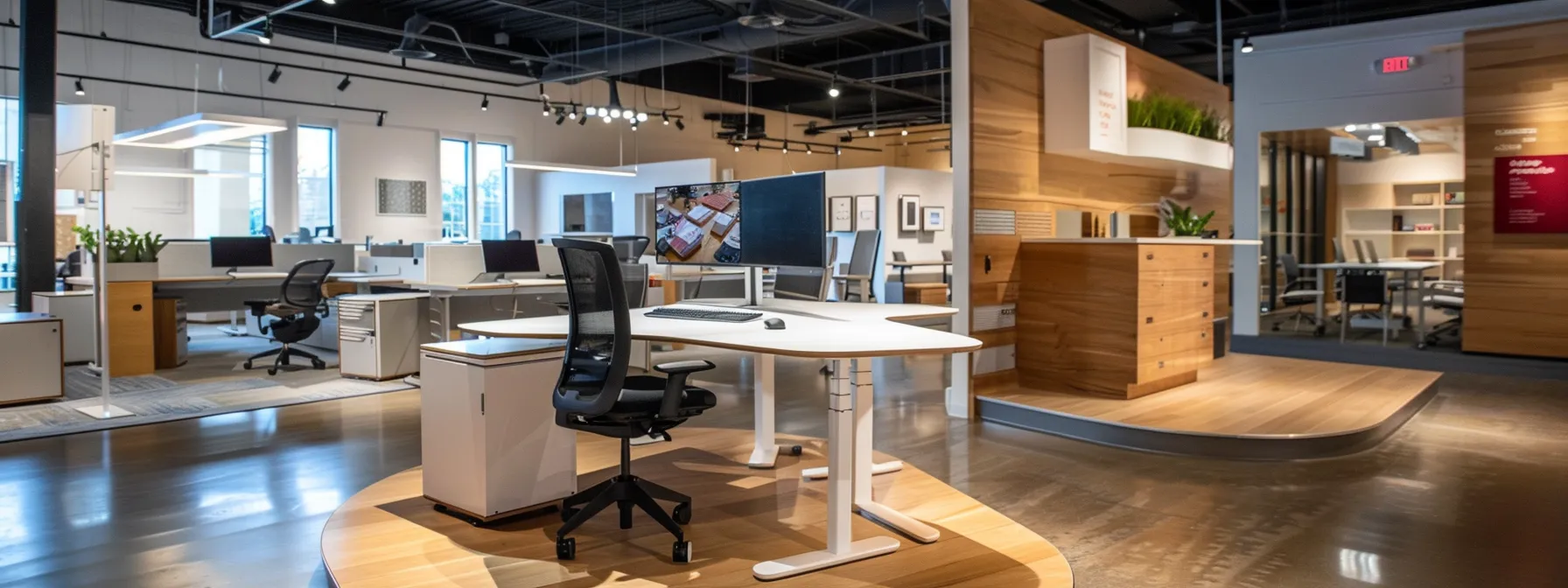
ADA standards significantly influence the design of office furniture by establishing guidelines that prioritize accessibility and safety. This alignment ensures that items such as desks meet the unique needs of individuals requiring more accommodating setups. Successful case studies highlight organizations that have integrated ADA-compliant desks into their workplaces, effectively creating environments that promote productivity and comfort. Additionally, incorporating ergonomic principles into ADA desk design not only enhances usability but also supports overall well-being. Elements like strategic placement of columns and thoughtful positioning of fire alarm systems ensure that all users, regardless of mobility challenges, can navigate the space safely. The outcome fosters an environment conducive to therapy and engagement, ultimately enriching the workplace for all individuals.
ADA compliance plays a critical role in shaping office furniture design by removing barriers that can lead to discrimination against individuals with disabilities. It forces designers to consider various factors, from ensuring adequate knee clearance beneath desks to incorporating features like accessible changing rooms and optimized layouts around essential amenities, such as bowls in lunch areas. This holistic approach fosters an inclusive environment, where every detail, including the arrangement of furniture, promotes equal access for all users.
Case studies highlight various properties where the construction of ADA-compliant desks has significantly improved accessibility for users. For instance, one office facility undertook a comprehensive redesign that ensured desks adhered to knee clearance standards, resulting in positive feedback from a diverse percentile of employees. This implementation not only addressed functionality but also created an inviting space where the overlap of design and accessibility met the needs of all individuals, regardless of their physical capabilities.
Incorporating ergonomic principles into ADA desk design significantly improves both accessibility and user comfort. This approach not only facilitates better interaction in spaces like courtrooms but also enhances the overall functionality of environments where physical therapy and other rehabilitation processes occur. Thoughtful design elements address the needs of individuals navigating sidewalks or working in office renovations, ensuring a seamless experience for all users.
As businesses strive to meet ADA standards, the demand for custom desks has surged. Custom solutions not only enhance accessibility but also cater to individual needs, making compliance an exciting opportunity for innovation.

When customizing desks while prioritizing ADA compliance, an effective strategy involves a comprehensive understanding of the standards set forth for accessible design. Collaborating with disability advocates ensures that the needs of all users are adequately represented, fostering an inclusive atmosphere. This partnership can facilitate innovative solutions that keep critical aspects such as standby power for electronic devices in mind while also ensuring clear pathways similar to pedestrian crossings for easy navigation. Incorporating user feedback strengthens the design process, allowing for adjustments that enhance the overall functionality of ADA tables in various settings, including spaces adjacent to bleachers or emergency exits. Taking these factors into consideration will lead to well-rounded solutions that meet the diverse needs of the public.
Customizing desks while ensuring ADA compliance involves addressing specific environmental needs, such as modifying spaces within a prison to facilitate access to various essential features. For instance, incorporating knee clearance allows individuals, whether in cells or at cash registers, to maneuver comfortably, accommodating both standard and wheelchair users. Effective design also considers the location of urinals and other fixtures, ensuring that access remains unobstructed, much like the space required for a car door, enhancing overall usability in constrained environments.
Effective collaboration between designers and disability advocates is essential for creating customized computer desks that meet ADA standards. By understanding the specific height requirements and ensuring proper knee clearance, designers can accommodate users’ needs from different angles, fostering an inclusive workspace. This partnership facilitates discussions on unique circumstances, such as those involving balcony spaces, ensuring that every fraction of space is optimally utilized for improved accessibility.
Incorporating user feedback into ADA-compliant desk designs is essential for addressing the varying needs of individuals. Engaging users from diverse backgrounds provides valuable insights that help alleviate stress associated with accessibility challenges, particularly in locations like patios or areas adjoining walls. This feedback encourages designers to create solutions that navigate potential obstacles, such as curb and escalator transitions, ensuring that every user can interact comfortably with their environment.
| User Feedback Insights | Impact on Design |
|---|---|
| Addressing Stress Points | Improves overall user experience and reduces frustration |
| Considerations for Patios and Walls | Enhances accessibility in outdoor and confined spaces |
| Feedback on Curb and Escalator Usage | Informs appropriate design adaptations for seamless navigation |
Custom desk design is evolving rapidly, driven by both regulatory needs and innovative thinking. As designers embrace new materials and technology, it’s time to explore what’s next in ADA desk design.
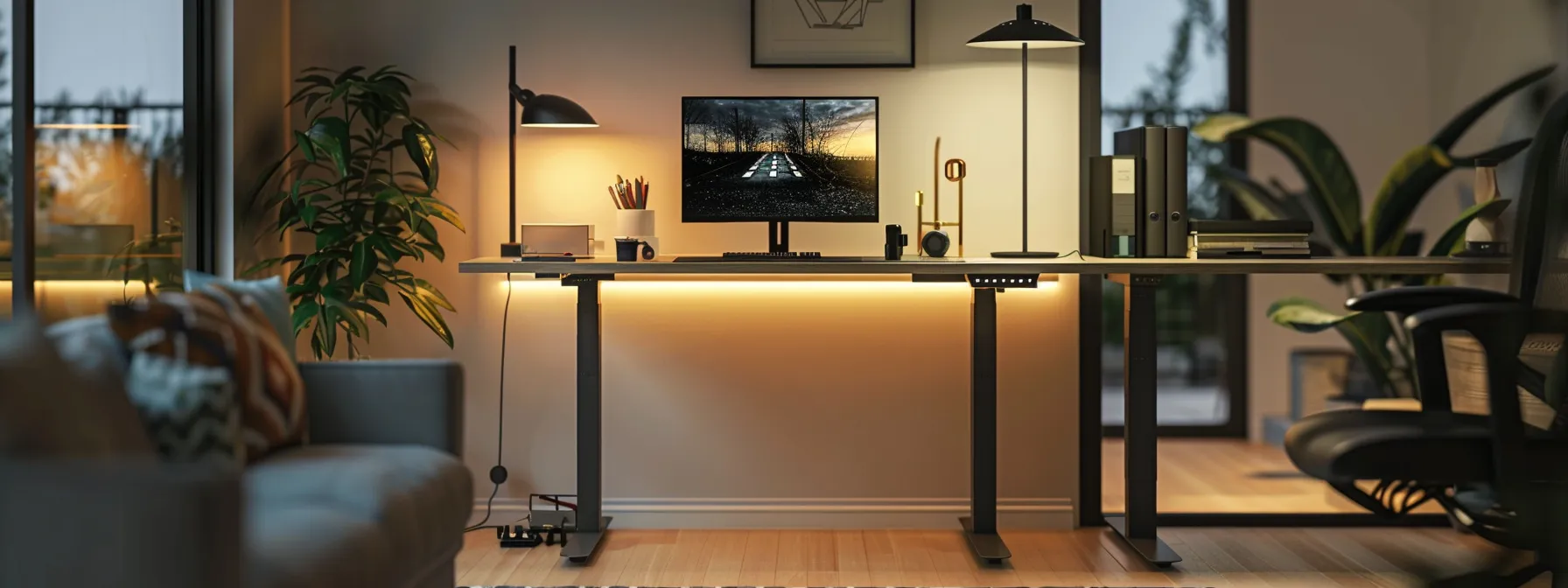
The progression of ADA desk design reflects a commitment to enhancing accessibility through emerging technologies and a renewed focus on inclusivity. Innovations such as adjustable height desks and smart furniture will significantly improve accessibility for users with disabilities, allowing them to adapt workspaces to their unique needs. The expectation is that ADA standards will continue to evolve, incorporating design principles that consider not just function but also the length of time individuals spend utilizing these spaces. Moreover, the increasing emphasis on inclusivity in workplace furniture design signals a shift towards environments that cater to diverse user experiences. As designers tackle challenges such as ensuring adequate knee clearance while utilizing space efficiently—akin to maximizing closet space or maintaining the thoughtful positioning of toilet paper dispensers—prioritizing pedestrian access will remain critical in creating equitable environments.
Advancements in technology increasingly focus on improving accessibility for users, particularly those utilizing wheelchairs. Innovative designs, such as height-adjustable desks, provide the flexibility to accommodate various knee clearance requirements, ensuring that individuals can maintain a clear floor for comfortable movement. Additionally, portable machines fitted with features to modify workspace environments cater to a range of user needs, enhancing the overall accessibility of different setups, including restroom facilities with portable toilets.
| Technological Innovations | Impact on Accessibility |
|---|---|
| Height-Adjustable Desks | Accommodate various knee clearance needs for wheelchair users |
| Portable Machines | Enhance accessibility in multiple settings |
| Accessible Restroom Solutions | Improve usability and comfort with portable toilets |
Predictions for the evolution of ADA standards in desk design suggest a shift toward more versatile setups that prioritize user comfort and accessibility across various environments. The inclusion of features like induction loops will enhance auditory accessibility in public spaces such as arenas, ensuring individuals with hearing impairments can engage fully. Furthermore, as vending machines and similar installations are integrated into dwelling spaces, the design will likely adapt to accommodate inclusive knee clearance requirements, fostering a truly accessible atmosphere for all users.
The design of workplace furniture is increasingly prioritizing inclusivity as organizations recognize the need to cater to diverse user groups, especially in light of the Americans with Disabilities Act of 1990. This trend extends to various sectors, including historic preservation efforts that incorporate accessible features within renovated buildings, nursing homes, and public spaces like bus stops. By integrating these principles, designers create environments that encourage participation and engagement for all individuals, promoting a culture of accessibility that benefits everyone.
Understanding ADA desk knee clearance standards is essential for creating inclusive workspaces that accommodate individuals with disabilities. These standards ensure comfortable access and usability, allowing everyone to navigate their environment effectively. By prioritizing proper design dimensions and features, organizations foster a culture of accessibility and safety. Ultimately, adhering to these guidelines enhances productivity and promotes equal opportunities for all users.

When considering the safety and accessibility of all users in a restroom, sink clearance plays a crucial role. The amount of space around a sink
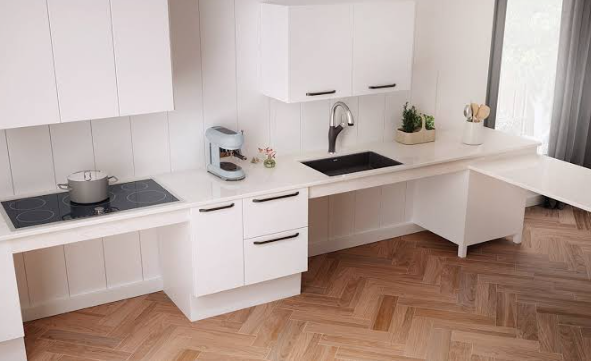
Building an ADA-compliant kitchen doesn’t have to involve a full renovation. With a few adjustments, you can ensure ADA clearance in your kitchen and make